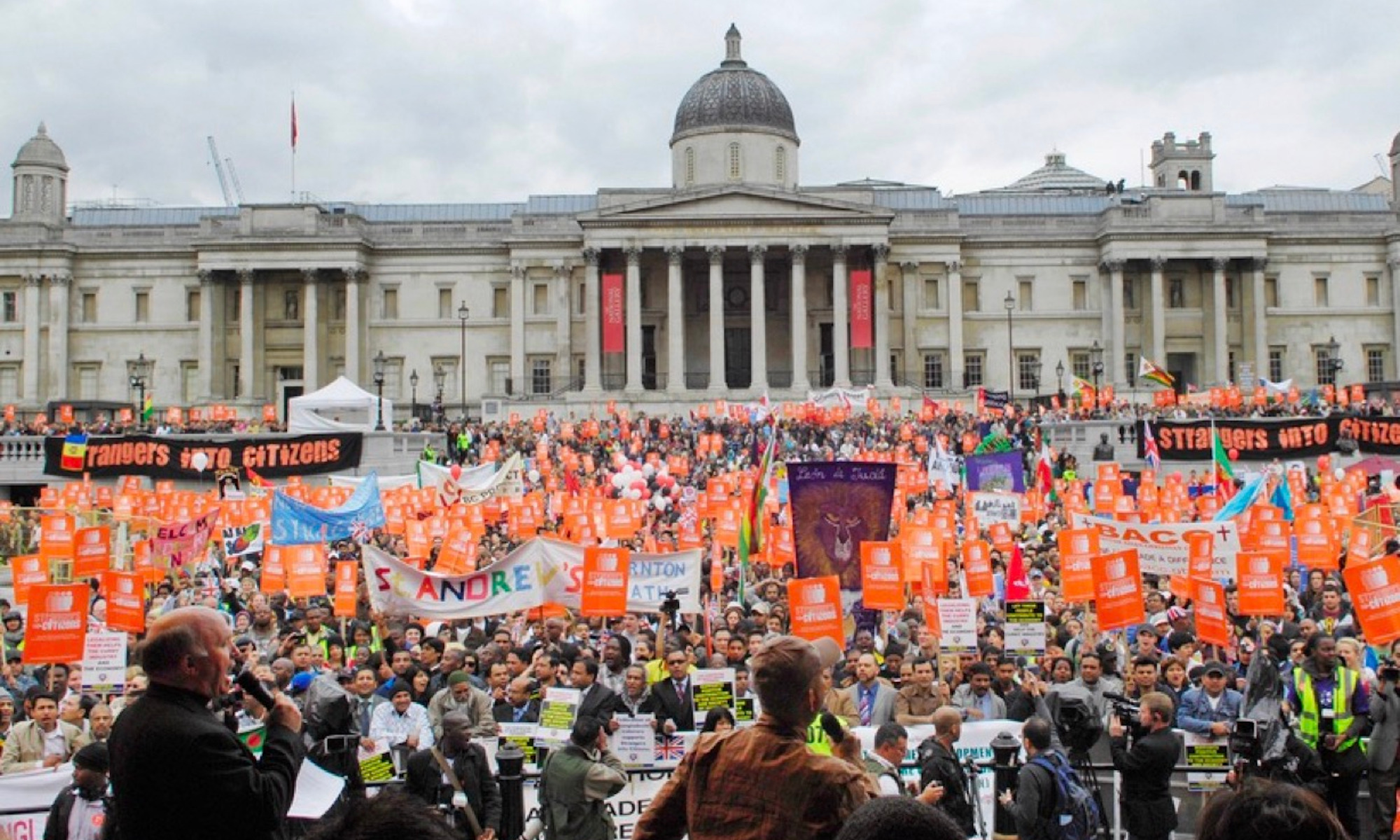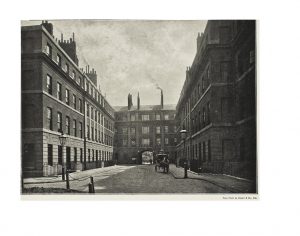It’s the dawn of the 19th-century and we’re in London’s Greenwich District.
The population stands at 32,621. Our district has only one hospital, Royal Seamens, which cares for our disabled sailors. A decade into the century, the population grows to 36,780—an increase of 12.75 percent. No new institutions appear in this period. Another decade passes and the population is now 41,530. This is an increase of yet another 12.91 percent. The population growth in the two decades has remained the same—we’ve had a total of 27.21 percent increase in population since the turn of the century. The numbers are rising yes, but this is not substantial enough to lead to subsequent growth in the institutions in the district. We need another factor for a more significant change to occur. This comes in 1834, when the new Poor Law, which requires children to be housed in exchange for work, is passed in London. But our district has to wait a bit longer—six years, to be exact. In 1840, the Greenwich Poor Law Workhouse appeared.
Between 1841-1850, the population rose to 55,212. This entails an increase of 32.94 percent from the previous decade and an increase of 69.25 percent since the beginning of the century. The appearance of the workhouse has impacted the growth of our district in this short period—in fact, we can speculate that the workhouse might be responsible for a 20.11 percent rise in the population. But we’ve to speed later into the century for a full glimpse of the true impact of the workhouse.
Boom! We’re now at the tail end of the century. The population in Greenwich District is 131,233 people. This is an increase of 302.3 percent since the turn of the century. But we want to know what caused the population growth. In just the last half of the century, the population has risen 137.69 percent. In the first half, as you may remember, we’d a growth of only 69.25 percent. The difference is more than double. This means the workhouse has significantly increased the population of Greenwich District.
The suggestion of our data is clear. The workhouse has recruited a lot of children, many of whom had traveled from outside our district. In 1875, another workhouse had to be built to accommodate more inmates. Perhaps due to the poor conditions at the workhouses, St. John’s Hospital was built in the district. Where we’d had a hospital for seamen previously, we now have two missions — our district now caters to the spirituality of the seamen, which signifies the growth of the church in the late 19th-century.
From the experience of our district, we glean a trend, which may extend to the rest of the city. The introduction of the new Poor Law in 1834 led to the emergence of the workhouses, which were a magnet for inmates. This subsequently led to the growth of the population in the areas where the workhouses were located.
***
Up until now, we’ve gotten the impression that the upsurge in Greenwich’s population was entirely due to the workhouses, but this may not be true. Other sites in our district have also played a role in attracting residents from around the city and perhaps even the world. Greenwich was home to the Royal Observatory, which, as the image below indicates, was a popular attraction. It was located in a park, which turned into a site for social gatherings. The district was also home to astronomers from around the world. As the population grew and industry flourished, scientific discoveries began to be made. Time was measured; new maps were made and the stars and planets explored—this was Greenwich, after all. All these factors contributed to the expansion of the district and the rise of the population.

But we’re getting ahead of ourselves.
You may be asking how these factors were interconnected. Well, let’s consider trade, which perhaps provided the most important impetus for Greenwitch’s growth. Our district housed the West India Docks, which facilitated the import and export of goods. This brought free raw materials and labor. The docks were surrounded by warehouses, which made it easier to load and reload goods, shortening the amount of time it took. This design was efficient and it was replicated all across the city, leading to the growth of the shipping industry. There was also the East India Company in our district, which was established in 1803 and even preceded the West India Docks, and it brought goods and labor all the way from India. We can imagine some of the workers must have settled in Greenwich. We can also speculate that traders moved from other parts of the city to be closer to the docks. This created an interconnected web, which linked our district to other parts of the city and the outside world all at equal measure— it was the net of capital, it was the pace of the 19th-century.
The hospital was located just across from the docks, which perhaps was meant to control the outbreak of diseases.

As we can see in the image below, the Empire was beginning to take shape. From the docks, the goods were sent to the warehouses and the people to the hospital. And the first part of the cycle was complete.

***
The second part of the cycle of capital involves selling. To understand this better, we need to draw closer, right into a street in Victorian London.

It’s past noon. You’ve reached High Street, which houses your business. The carriage creaks to a halt.
Just as you’re stepping out, the driver leans in and whispers, “Sir, your hair.”
You don’t catch the rest of what he says, but you decide you must get a haircut today and go straight into the barber.
Just like yesterday, there’s another man in the line and you’re asked to stand by. Stepping out of the shop and into the chair outside, you fish out a book from your coat and begin reading.
Crank, crank! The noise is too distracting. Craning your neck for a look, you notice a glass cutter has taken up the shop on the second floor of the building. The landlord was looking for someone to rent it.
You begin to wonder why the carriages still haven’t arrived today. When you draw out your watch from your coat pocket, you notice it’s broken. You decide to take it to the watchmaker, who says you’ll be waiting for three days for it to be fixed. This is too long.
Annoyed, you step into the street.
In distance, the carriages you were waiting for are approaching. They’re carrying garments you had ordered weeks ago. You now head to your shop to open the store.
“Sir, sir,” you hear from behind you, “it’s your turn.”
This is the barber’s voice. You pretend you haven’t heard him and fasten your pace. You run into men unloading china and a whole package of plates falls down and crushes. The china dealer is dismayed, but once he notices you’re the owner of the cloth mart, he calms down, comforted by the fact that you’ll be able to pay for the broken plates. The hosier and fringe manufacturer across from your building has also received the hosiery she had ordered and you’re worried about the competition. As you open your store, a waft of tobacco fills the air. It must be from the tobacco dealer’s direction. From your window, you catch a young boy stealthily walking out of the gold seller’s and breaking into a run. The men on the street take after him.
“I must return to 2021,” you think. But for now, you must remain a cloth dealer in 19th-century London.

°

